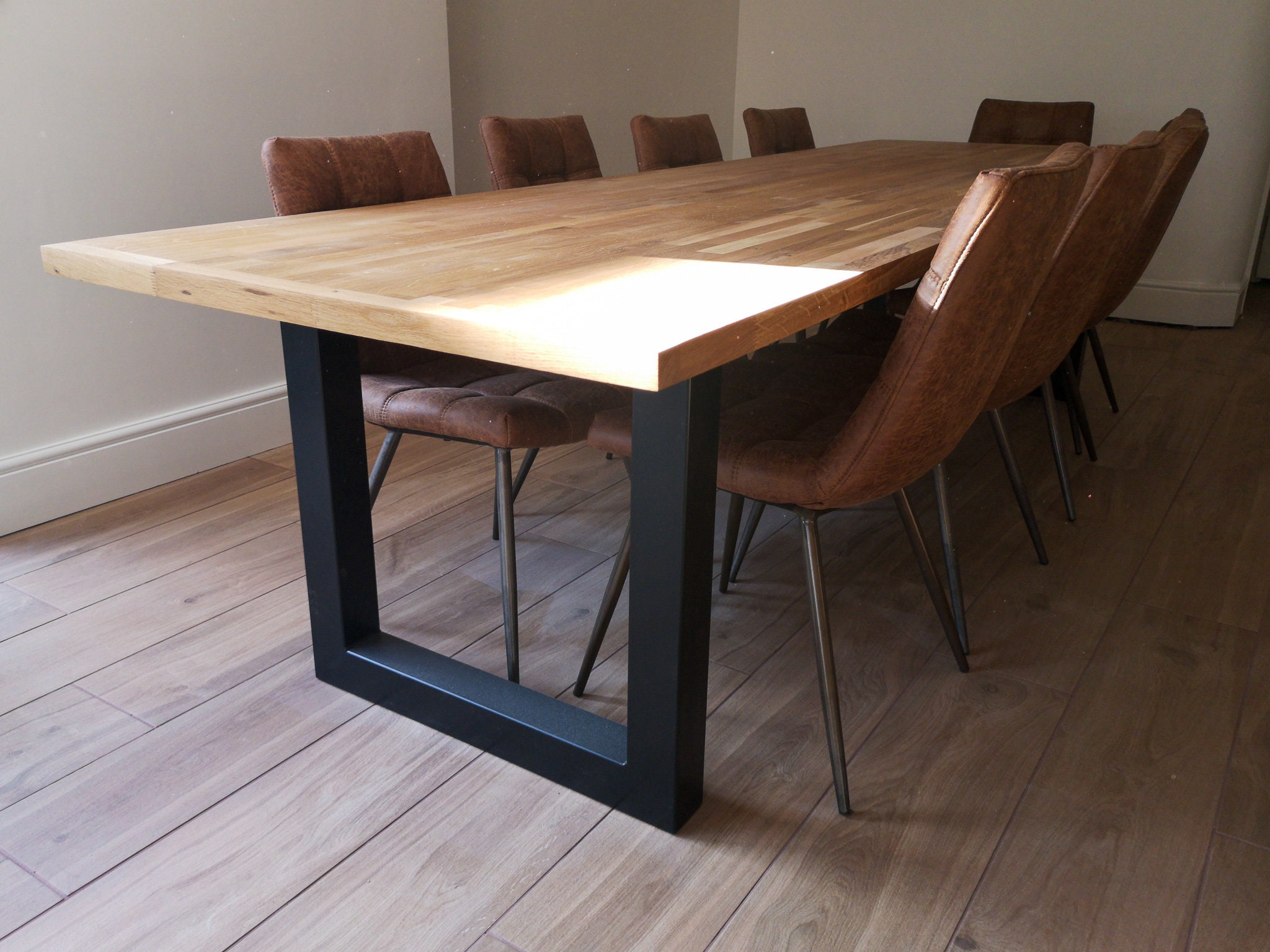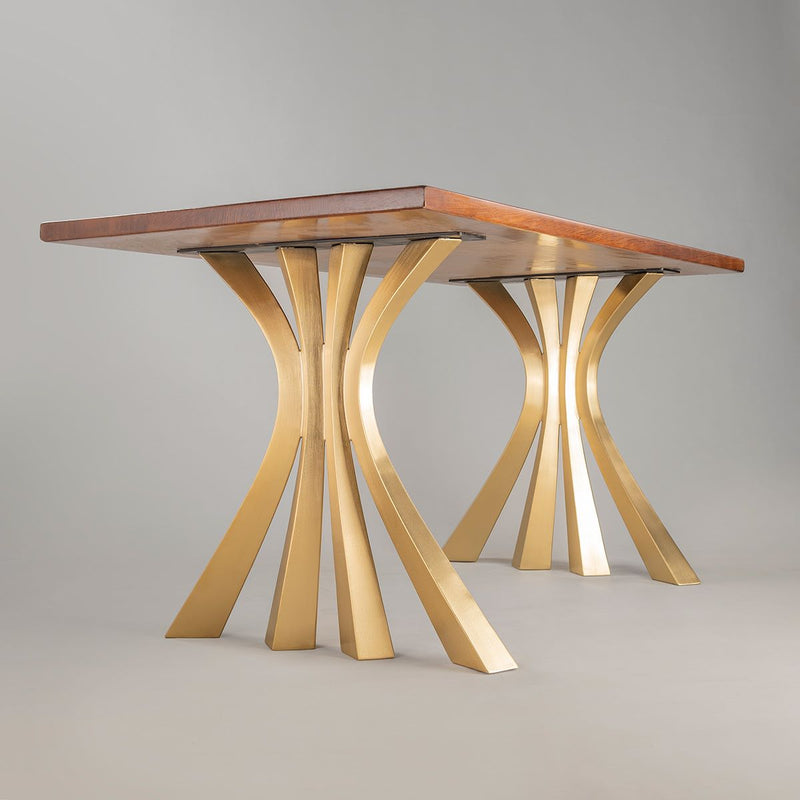Distinct Dining Room Table Legs to Transform Your Eating Location
Distinct Dining Room Table Legs to Transform Your Eating Location
Blog Article
A Detailed Consider Eating Table Leg Styles: Locating the Suitable Match
Picking the right table leg style is essential for both aesthetic charm and useful performance. Typical four legs offer classic style and stability, while the pedestal base gives increased legroom and a modern appearance. For those with bigger tables, trestle legs guarantee sturdy assistance, whereas hairpin legs present a mid-century modern ambiance with their minimalist design. The x-shaped legs blend contemporary design with enhanced stability. Each of these options brings unique advantages, making the choice greater than just an issue of choice. Explore even more to find which design flawlessly matches your dining room and way of living.
Typical Four Legs
Amongst the various types of dining table leg styles, the traditional four-leg style remains an ageless selection for lots of homes. 4 legs supply balanced support, ensuring the table continues to be stable and capable of bearing significant weight (dining room table legs).
From a visual point of view, the conventional four-leg layout can be easily adjusted to numerous interior styles. Whether crafted from timber, metal, or a mix of products, these legs can be delicately carved, smooth and minimalistic, or anything in between. Their versatility enables them to complement both rustic and contemporary settings seamlessly.
Moreover, the uncomplicated structure of the four-leg design promotes simplicity of motion and positioning within an area. Unlike even more facility bases, this design lessens blockages, providing enough legroom for diners. In recap, the typical four-leg table leg design marries enduring style with sensible performance, making it an astute choice for those looking for both kind and function in their dining furnishings.
Pedestal Base
Often celebrated for its sophisticated and space-efficient layout, the stand base is a recognized alternative to the standard four-leg arrangement in eating table leg designs. This distinct base typically features a single main column sustaining the table top, which can vary in form, from ornately carved timber to smooth, modern-day metal. Among the primary advantages of the stand base is its capability to optimize legroom and seating versatility. Without corner legs, restaurants are afforded better freedom of motion, making it a perfect selection for round and oval tables that advertise more intimate and comprehensive events.
Additionally, the pedestal base's main support can deal with significant weight, permitting for the usage of much heavier table tops, such as marble or thick hardwood. This stamina coupled with its aesthetic versatility makes the pedestal base a prominent choice in both traditional and modern indoor setups. It can effortlessly incorporate with various layout styles, from classic elegance to minimalist modernity. The central column itself supplies a canvas for detailed styles and imaginative expressions, including an aspect of visual passion below the table. In recap, the stand base combines functionality snappy, making it an improved and useful choice for diverse dining environments.
Trestle Legs
Trestle legs provide a robust and ageless structure for eating tables, identified by their horizontal cross-bracing and durable support beams. Stemming from middle ages times, this style has actually developed yet kept its essential framework, making it a perennial fave in both standard and contemporary settings. The central trestle beam of light, typically sustained by 2 or even more upright articles, supplies extraordinary stability, allowing for larger table sizes without the demand for additional legs.
A considerable advantage of trestle leg tables is the enough legroom they provide. Unlike tables with four corner legs, the absence of blockages at the table's edges gives unimpeded area for chairs and restaurants, boosting comfort and ease of access. This makes trestle tables optimal for accommodating bigger gatherings, whether in an eating area or a reception hall.
The aesthetic versatility of trestle legs is noteworthy. Offered in a selection of products such as timber, steel, and composite, they can be finished to match a variety of interior styles. From rustic farmhouse to streamlined contemporary layouts, trestle legs can be personalized to match specific tastes. Their enduring allure and functional benefits make trestle legs a compelling selection for those seeking both style and usefulness in their table.
Hairpin Legs

The allure of barrette legs hinges on their simpleness and flexibility - dining room table legs. Readily available in a variety of products, consisting of steel and brass, they can be finished in numerous shades to enhance various interior styles. Whether coupled with a rustic wooden tabletop or a modern glass surface area, barrette legs effortlessly blend performance with a touch of vintage charm
Toughness is another noteworthy function of barrette legs. Regardless of their fragile look, these legs are engineered to bear considerable weight, making sure the eating table continues to be stable and protected. Furthermore, they are fairly simple to set up, making them a prominent informative post selection for do it yourself fanatics and specialist furnishings manufacturers alike.
X-Shaped Legs

Constructed from materials such as steel, timber, or a combination of both, X-shaped legs can be tailored to match numerous design preferences. Steel legs often provide a streamlined and industrial feel, perfect for loft-style apartments and contemporary eating spaces. On the other hand, wood X-shaped legs supply a warmer, much more rustic charm, ideal for farmhouse or eclectic interiors. The adaptability in products allows property owners to tailor their table to better fit their overall style system.
Moreover, the engineering behind X-shaped legs guarantees even weight circulation, decreasing the threat of tottering and enhancing longevity. This makes them specifically well-suited for larger table that call for additional support. Essentially, X-shaped legs blend more information functional design with modern aesthetics, making them a timeless choice for diverse eating settings.
Verdict
A thorough understanding of eating table leg designs discloses the unique attributes and advantages of each style. Conventional four legs offer security and classic charm, while pedestal bases offer legroom and a streamlined look. Trestle legs make certain durable support for larger tables, and barrette legs present a mid-century contemporary aesthetic. X-shaped legs combine modern style with enhanced security. Picking the proper leg style ensures both click this useful and aesthetic complete satisfaction in any eating area.
Report this page